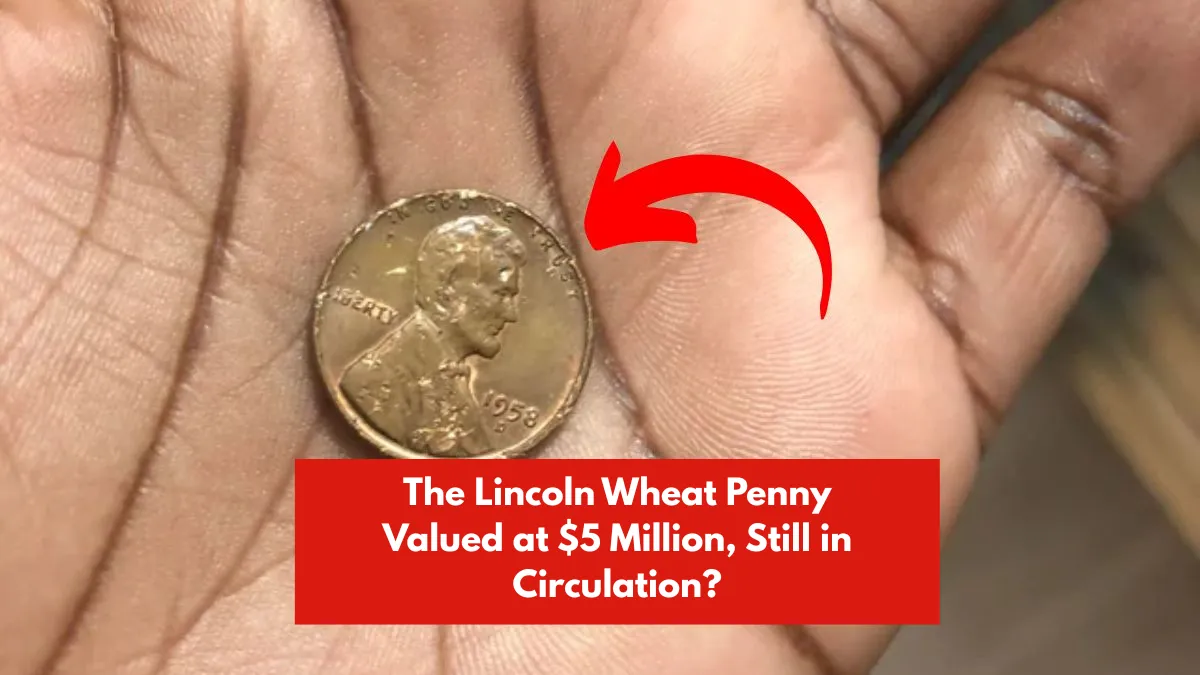Lincoln Wheat Penny Worth $5 Million: Could You Have One?
Have you ever thought that a penny in your pocket could be worth millions? Most of us ignore these little copper coins. But for coin collectors, one special penny could change everything. Some rare Lincoln Wheat Pennies are worth as much as $5 million, and believe it or not, a few might still be hiding in regular change today.
How the Lincoln Wheat Penny Began
The Lincoln Wheat Penny was first made in 1909 to celebrate 100 years since President Abraham Lincoln’s birth. It was the first U.S. coin to show a real person, replacing the usual Lady Liberty. The front of the penny showed Lincoln’s face, and the back had two wheat stalks. People quickly loved the design, and it stayed in use until 1958.
Why Some Pennies Are Worth Millions
Most wheat pennies are only worth one cent. But a few rare ones became valuable because of special mistakes, low production numbers, or unique events in history. Here are some of the most valuable:
1. The 1943 Copper Penny
In 1943, the U.S. Mint made pennies from steel to save copper for World War II. But a few copper blanks were accidentally used that year. Only about 20 to 40 of these copper pennies exist today. Because they were never supposed to be made, they are extremely rare. One of them sold for $5 million!
2. The 1909-S VDB
When the Lincoln penny was first made, it included the designer’s initials “VDB” (Victor David Brenner) on the back. Some people didn’t like this, so the Mint removed the initials. Only 484,000 coins with the “VDB” initials were made in San Francisco. These 1909-S VDB pennies are now worth over $100,000 if in great condition.
3. The 1955 Doubled Die
This penny has a clear mistake—the words on it look doubled. It happened because of an error during the minting process. If you see two sets of “IN GOD WE TRUST” or “LIBERTY,” you might be holding a 1955 Doubled Die. These can sell for tens of thousands of dollars.
How to Spot a Valuable Wheat Penny
If you want to check your coins for hidden value, here’s what to do:
- Look at the date. Valuable ones include 1909, 1914, 1922, 1931, and 1943.
- Find the mint mark. Coins with a small “S” (San Francisco) or “D” (Denver) are often more valuable.
- Check for errors. Doubled letters or off-center designs may mean a minting mistake.
- Use a magnet. A real 1943 copper penny won’t stick to a magnet, but a steel one will.
Where Rare Pennies Might Be Hiding
Valuable pennies still turn up in surprising places, including:
- Old piggy banks
- Jars of coins
- Inherited coin collections
- Garage sales or estate sales
- Bank coin rolls
Many collectors search through thousands of coins hoping to find that one rare penny.
What to Do If You Find One
If you think you’ve found a special penny:
- Don’t clean it. Cleaning can lower its value.
- Examine it carefully. Use a magnifying glass.
- Weigh it. A real 1943 copper penny weighs about 3.11 grams.
- Contact a professional. A coin grading service like PCGS or NGC can tell you if it’s real and how much it’s worth.
A Small Coin with a Big Story
The Lincoln Wheat Penny isn’t just valuable because of money. It’s also a piece of American history. These coins were used during major events like World War I, the Great Depression, and World War II. Holding one is like holding a piece of the past.
Disclaimer
This article is for educational purposes only. Coin values can change depending on the market, condition, and rarity. If you think you have a valuable coin, get it professionally checked before buying or selling. Rare coins are very hard to find—but the chance is still there!
Frequently Asked Questions
Q1: How much is a regular Lincoln Wheat Penny worth?
Most wheat pennies from the 1940s and 1950s are worth just 1 to 10 cents unless they are in excellent condition or have rare features.
Q2: What makes a penny rare?
A penny becomes rare due to minting errors, low production numbers, or special materials used (like copper in 1943 instead of steel).
Q3: Can I find a rare penny in my pocket change today?
Yes, it’s rare—but possible! People have found valuable coins in coin rolls, change jars, and even pocket change.
Q4: Where should I take a coin to find out its value?
Go to a professional grading service like PCGS or NGC, or visit a reputable coin dealer who specializes in collectibles.
